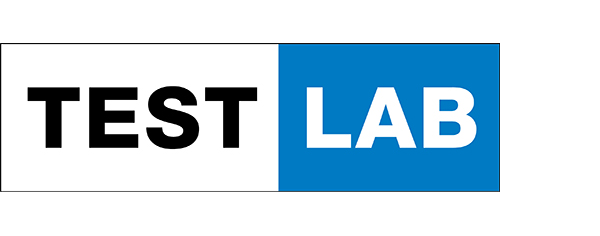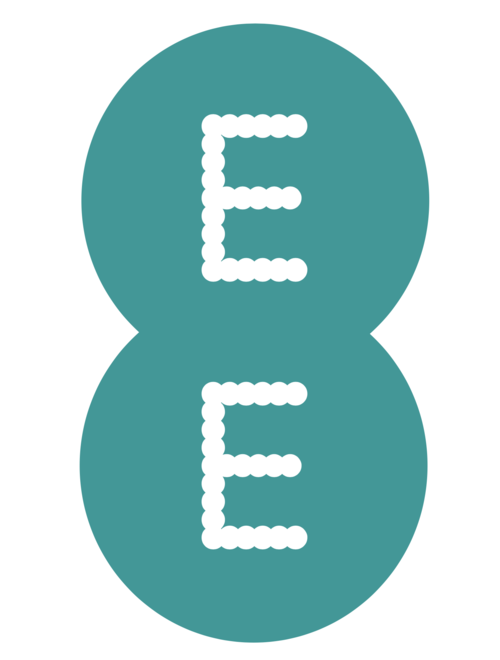Note: Below you still find the 2019 Mobile Network Test in the UK. The 2021 test will be updated here shortly.
You can already download the 2021 PDF Version in the Download section.
THE 2019 MOBILE NETWORK TEST IN THE UNITED KINGDOM
For the sixth time, the benchmarking expert umlaut and connect magazine have conducted their definitive benchmark of the UK‘s mobile networks. Once again, we have enhanced the underlying methodology.
While all operators in the UK worked strongly on expanding their 4G networks and establishing their first 5G installations, we wanted to find out: Which contender offers the best performance and the highest reliability of mobile voice and data services?
RESULTS IN A NUTSHELL
EE wins the umlaut connect Mobile Benchmark in the UK for the sixth time. Vodafone maintains the second place and shows clear score improvements over last year‘s results. O2 and Three swap places, with O2 ranking third and Three fourth.
The network benchmarks conducted by umlaut and connect are widely accepted as the de-facto industry standard and for being highly objective. The carefully designed methodology of our 2019 benchmark in the United Kingdom represents a holistic approach to network benchmarking. It combines drive tests and walk tests for executing detailed voice and data measurements under controlled circumstances combined with a sophisticated crowdsourcing methodology.
This provides profound insights into the overall coverage of voice, data and 4G services, real-world User Download Speeds and Data Service Availability. The drive tests and walk tests allow for the maximum capabilities of the networks to be evaluated. Crowdsourcing unveils the service quality and performance actually experienced by real users. We have thoroughly weighed these components in order to give a realistic and conclusive assessment of the rated networks‘ true potential and performance.
EE IS THE OVERALL WINNER, VODAFONE SHOWS DISTINCT SCORE IMPROVEMENTS
As in the five previous years, the overall winner is EE. (In 2016, Vodafone shared the first place with EE). The largest mobile operator in the UK defended its position and earned the grade very good. EE scores best in all three categories of our Benchmark: voice, data and crowdsourcing. As in the two previous years, Vodafone maintains the second place. In comparison to last year‘s results, the operator manages to improve considerably in the voice and crowd disciplines, and slightly in the data discipline. In our city comparison, Vodafone turns out to be a local champion in Bristol, Liverpool and Manchester, and scores on par with EE in Birmingham.
O2 overtakes Three this year and claws its way back to third place. The second largest UK operator outperforms Three in all evaluated categories and receives the grade satisfactory. In the crowd score, O2 is even a little stronger than the second-placed Vodafone.
With a noticeably lower score than O2, Three achieves the overall grade sufficient. Its performance levels fall behind last year‘s results. But in our crowdsourced evaluation, Three shows some improvements over the previous year.
“EE is the winner for the sixth time. Vodafone ranks second with the highest score improvement since our 2018 Benchmark, O2 takes the third rank from Three this year.”
THE UK OPERATORS
EE and O2 are the largest mobile network operators in the UK, followed by Vodafone, with the smaller Three attacking with aggressive tariffs. Each of the mobile networks is constantly increasing its 4G coverage, additionally all four contenders have started the deployment of their first 5G network cells.
With approximately 29 million customers, EE (formerly Everything Everywhere) is the biggest mobile network operator in the UK. Since 2016, EE has been part of the British Telecom Group. EE started offering a 4G service in 2012. Regarding 4G coverage, EE reports geographic coverage instead of population coverage. They quote to currently offer 91 percent 4G geographic coverage. EE operates its 4G network at 800 MHz, 1800 MHz and 2600 MHz. Additionally, it offers 2G at 1800 and 3G at 2100 MHz.
EE offers two LTE highspeed services based on Carrier Aggregration: “Double speed 4G“ uses 2 x 10 MHz in the 1800 MHz spectrum. For this variant, EE advertises download speeds of at least 60 Mbps. Additionally, EE operates a growing number of “4G+“ network cells that support up to 5CA (five carrier frequencies) with up to 1 Gbps under the name “4GEE”. Voice over LTE (VoLTE) is available in most of its 4G network. Furthermore, EE has launched 5G in approximately 50 UK cities and towns and plans further rollouts during 2020.
O2 claims to be the second largest mobile network operator in the UK with approximately 26 million customers. Formerly a subsidiary of British Telecom, O2 plc was purchased by the Spanish telecommunications company Telefónica in 2006. Today, the company also owns half of the mobile virtual network operator Tesco Mobile which operates on the O2 network in the UK. O2 started providing its 4G service in 2013 and has expanded it across the UK since. In late 2019, O2 claimed to cover approximately 99 percent of the UK population with its 4G service.
O2 operates its 4G network mainly on 800 MHz with limited additional 1800 and 2100 MHz coverage in metropolitan areas. Additionally, O2 provides 2G on 900 and 1800 MHz and 3G on 900 and 2100 MHz. Like the other UK operators, O2 has rolled out Voice over LTE (VoLTE) in most of its 4G network. In 2019, O2 has launched first 5G installations in parts of Belfast, Cardiff, Edinburgh,
London, Slough and Leeds, and is planning to roll out 5G in areas of 50 towns by mid-2020.
Vodafone UK is part of the Vodafone Group which is also headquartered in the UK. The Vodafone Group owns and operates networks in 30 countries. Vodafone UK launched 4G/LTE in 2013. With around 18 million mobile subscribers, Vodafone is the third largest mobile network in the UK after EE and O2. In June 2012, Vodafone and O2 signed a deal to “pool” their network technologies, creating a single national grid of 18,500 transmitter sites. Both operators however announced they would continue to use their own independent spectrum
Vodafone operates 4G/LTE at 800, 1800, 2100 and 2600 MHz and claims to cover 99 percent of the UK population. Additionally, Vodafone offers 2G at 900 and 1800 MHz plus 3G at 900 and 2100 MHz. With “Carrier Aggregation”, Vodafone is upgrading its
4G network to “4G+” offering up to 1 Gbps – as well as Voice over LTE (VoLTE) telephony. Also, the operator has launched its first 5G cells in about 22 locations during 2019 and has announced the speed up of its 5G deployment during 2020.
Three UK is a subsidiary of Hutchison Whampoa and launched its mobile service in the UK in 2003. As a relatively young operator Three started as a 3G-only
network supplemented by 2G via national roaming. In December 2013, Three began to roll out its 4G/LTE service and expanded it rapidly all over the UK.
With about 10 million customers Three is the smallest mobile network operator in the UK but claims to carry over 36 percent of the nation‘s mobile data traffic. Offering the cheapest price for 4G and unlimited data plans (excluding tethering) may well support this claim.
In addition to 1800 MHz, Three offers 4G also at
800 MHz as well as 3G on 2100 MHz. The company claims to cover 99 percent of the UK‘s population with
at least 3G. According to their own account, about 85 percent of Three’s customer base is using 4G. The operator has deployed Voice over LTE (VoLTE) in most of its 4G network. The operator has launched 5G network cells in London and announced it will spread its 5G coverage to approx. 25 additional cities and towns in 2020.
A close look at the UK networks
The network benchmarks conducted by umlaut and connect are widely accepted as a completely objective authority. In 2019/2020, we present the umlaut connect Mobile Benchmark in the United Kingdom for the sixth time, further enhancing the methodology.
umlaut, headquartered in Aachen, Germany, is a world leader in mobile network testing. The company was formerly known as P3 communications and changed its name in autumn 2019 as part of restructuring and refocusing its activities. umlaut has over 4,300 employees, distributed in over 50 locations all around the world, with a turnover of more than 400 million Euros. umlaut is partnering with the international telecommunications magazine connect, which has more than 25 years of editorial expertise and is one of the leading test authorities in Europe for telecommunications products and services. Together, umlaut and connect have been conducting the most important network benchmark test in Germany for more than 15 years, extending it to other European
countries since 2009. As the de-facto industry standard, our benchmarking methodology focuses on customer-perceived network quality.
The 2019 umlaut connect Mobile Benchmark in the UK consists of drive tests and walk tests conducted in November 2019. Four drive test cars together covered about 10,700 kilometres, visiting 21 cities and 29 towns. Additionally, two walk test teams visited ten cities and travelled on trains between them. The test areas account for 17 million people, or approx. 27 percent of the total population of the UK. In addition, the results of extensive crowdsourcing analysis, considering 24 weeks from early June to mid-November 2019 are included in the score.
“Congratulations to EE for being the winner of this year‘s benchmark. Vodafone followed with the highest score improvement, while O2 also deserves acknowledgement for a clear score improvement, compared to our previous Benchmark, and advancing to third place. Finally, Three provides good voice services, particularly in towns and on roads.
With all UK operators starting to deploy 5G, we are looking forward to evaluate their 5G performance next year.”
Hakan Ekmen, CEO umlaut











